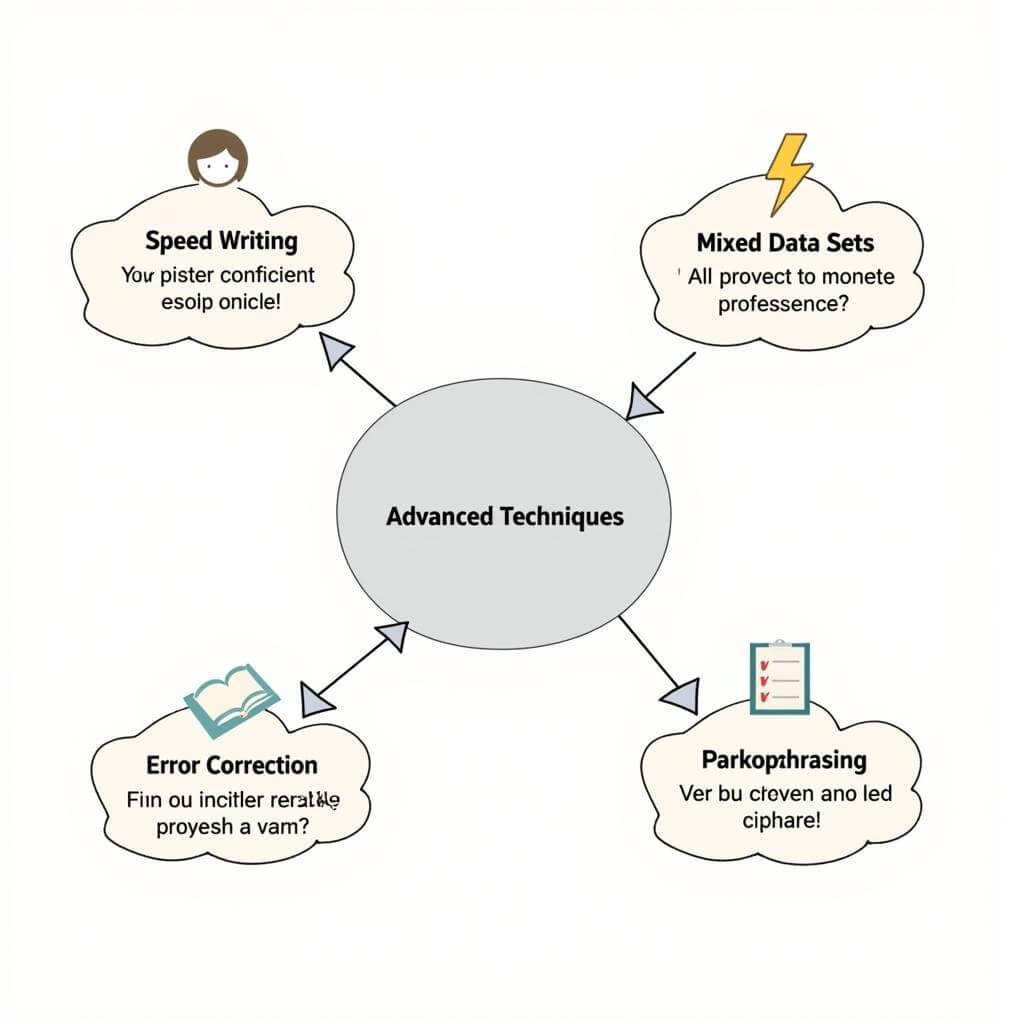IELTS Writing Task 1 can be a challenging component for many test-takers. Knowing how to practice effectively for task 1 descriptions is crucial for success. This comprehensive guide will provide you with expert strategies and practical tips to enhance your performance in IELTS Writing Task 1.
Understanding the Basics of IELTS Writing Task 1
Before diving into practice techniques, it’s essential to grasp the fundamentals of Task 1. This section of the test requires you to describe, summarize, or explain visual information presented in a graph, table, chart, or diagram. You’ll need to write at least 150 words in about 20 minutes.
How to describe IELTS Writing Task 1 graphs?
Key Elements to Focus On
When practicing for Task 1 descriptions, concentrate on these critical aspects:
- Data interpretation
- Vocabulary and language accuracy
- Coherence and cohesion
- Task achievement
Data Interpretation
Improving your ability to interpret data is fundamental to excelling in Task 1. Practice the following:
- Identifying main trends and patterns
- Recognizing significant features or notable differences
- Comparing and contrasting data points
Dr. Emma Thompson, an IELTS expert with over 15 years of experience, advises:
“Spend the first 2-3 minutes carefully analyzing the visual information. Look for overall trends, highest and lowest points, and any unexpected data. This initial analysis will form the backbone of your response.”
How to interpret data in IELTS Writing Task 1?
Vocabulary and Language Accuracy
Expanding your vocabulary specific to Task 1 is crucial. Focus on:
- Learning words to describe trends (e.g., increase, decline, fluctuate)
- Practicing synonyms to avoid repetition
- Mastering language for comparisons and proportions
IELTS Writing Task 1 vocabulary for bar charts?
Coherence and Cohesion
To improve the flow of your writing:
- Practice using a clear paragraph structure
- Use a variety of linking words and phrases
- Ensure logical progression of ideas
Task Achievement
Meeting all aspects of the task is vital. Practice:
- Selecting and reporting key features
- Providing an overview of main trends
- Supporting your description with relevant data
Effective Practice Techniques
To maximize your improvement, incorporate these practice techniques:
- Timed practice: Set a timer for 20 minutes to simulate exam conditions.
- Varied question types: Practice with different visual formats (line graphs, bar charts, pie charts, tables, diagrams).
- Self-assessment: Compare your answers to model responses and identify areas for improvement.
- Peer review: Exchange essays with study partners for feedback.
- Regular revision: Keep a vocabulary journal and review it frequently.
Professor James Lee, a renowned IELTS trainer, emphasizes:
“Consistency is key. Aim to practice Task 1 descriptions at least 3-4 times a week. This regular exposure will significantly boost your confidence and skills.”
IELTS Writing Task 1 line graph tips and vocabulary?
Common Mistakes to Avoid
Being aware of potential pitfalls can help you refine your practice:
- Overcomplicating language: Aim for clarity rather than complexity.
- Neglecting the overview: Always include a general summary of the main trends.
- Copying numbers directly: Paraphrase and summarize data instead.
- Providing personal opinions: Stick to objective description of the given information.
Mistakes to avoid in IELTS Writing Task 1?
Advanced Practice Strategies
Once you’ve mastered the basics, elevate your practice with these advanced techniques:
- Speed writing: Challenge yourself to complete tasks in 15 minutes to improve efficiency.
- Mixed data sets: Create complex scenarios by combining different types of visual information.
- Error correction: Practice identifying and fixing common mistakes in sample answers.
- Paraphrasing exercises: Rewrite model answers using different vocabulary and sentence structures.
 IELTS Task 1 Advanced Practice Techniques
IELTS Task 1 Advanced Practice Techniques
Conclusion
Mastering IELTS Writing Task 1 descriptions requires dedicated practice and a strategic approach. By focusing on data interpretation, expanding your vocabulary, enhancing coherence, and achieving task requirements, you can significantly improve your performance. Remember to practice regularly, learn from your mistakes, and gradually incorporate advanced techniques into your study routine. With consistent effort and the right strategies, you’ll be well-prepared to excel in your IELTS Writing Task 1.
FAQ
How long should I spend practicing Task 1 descriptions each day?
Aim for at least 30-45 minutes of focused practice daily. Quality is more important than quantity, so ensure your practice sessions are productive and targeted.
Can I use personal examples in Task 1 descriptions?
No, Task 1 requires objective descriptions of the given visual information. Personal examples or opinions are not appropriate for this task.
How can I improve my speed in Task 1 writing?
Regular timed practice is key. Start with 25 minutes and gradually reduce your time to 20 minutes as you become more efficient.
Should I memorize phrases for Task 1?
While having a repertoire of useful phrases can be helpful, it’s more important to understand how to use them appropriately. Focus on flexibility rather than memorization.
How important is handwriting for Task 1?
Clear, legible handwriting is crucial. Practice writing neatly under timed conditions to ensure your response is easily readable by the examiner.
Can I use bullet points in my Task 1 response?
No, your answer should be written in full paragraphs. Use clear topic sentences and supporting details instead of bullet points.


